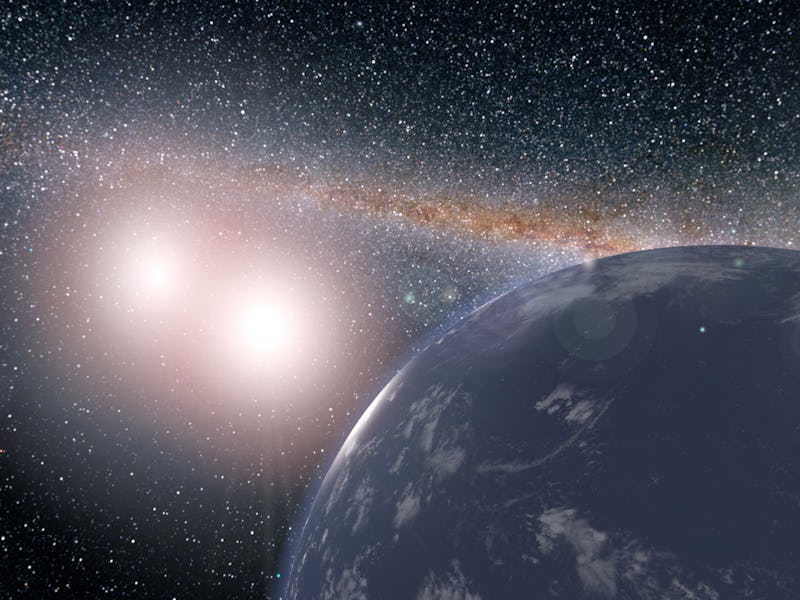NASA Imagined a Real-Life Tatooine — and It Probably Exists

New NASA research has found that an Earth-sized planet could exist and could support life in a binary star system, like the one that provides such extraordinary double sunsets on Luke Skywalker’s home planet of Tatooine.
The study was published this month in Nature Communications and led by Max Popp of Princeton University and Siegfried Eggl with NASA’s Jet Propulsion Laboratory. The two sought to answer if a planet orbiting two stars could support a climate hospitable to life as we know it.
Planets orbiting binary stars have already been discovered, although only of the very large and gaseous variety. However, this work proves that habitable planets could be there, too, and we shouldn’t rule out looking for them. Somewhere out there, a young alien Jedi really could be watching a pair of suns slowly descend towards the horizon as the sky fades to a deep purplish pink.
In order to answer the question, Popp and Eggl built a computer model of water-covered, Earth-sized planet orbiting around a model of Kepler 35, an actual binary star system. What they discovered was that, within a certain distance range from the system’s center of gravity, the planet could have enough of an atmosphere and hold enough heat to support life.
This, it should be noted, is how Skywalker’s Tatooine began — lush and covered in oceans and jungles and rainforests. It was only after a great war between the native inhabitants, long before Galactic Empire colonization, that the Star Wars planet dried up and came the harsh desert that Luke and Anakin knew well.
The climate on NASA’s Tatooine looks a little different depending on how far out you place its orbit. At the outer limit of that habitable zone, the planet would experience very large temperature variations, since the colder atmosphere would hold less moisture and less heat. Closer to the suns, the atmosphere would be thicker and as a result temperatures would be more stable. In either case, the planet would remain watery for millions or billions of years, long enough for alien life to rise up and take hold.
Those extraterrestrials would be treated to incredible sunsets, particularly as the model suggests there would be less cloud cover on this planet. The two suns would appear close together in the sky, in an interlocking dance as the planet orbits around them. There would still be a night and a day, although a bit more of each day would be filled with sunlight, thanks to the distance between the two stars.